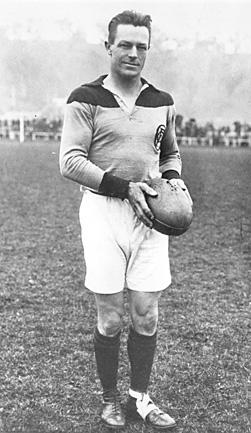Related Research Articles

Strahan Airport is an airport located 2 nautical miles west of Strahan, Tasmania, Australia. It is the main airport for the West Coast of Tasmania, and is owned and maintained by the West Coast Council. The need for an airport in the area was suggested in the 1950s, and suggestions for upgrades have occurred over time.

Dundas was a historical mining locality, mineral field and railway location on the western foothills of the West Coast Range in Western Tasmania. It is now part of the locality of Zeehan.

Horace Charles Gorringe was an Australian rules football player in Tasmania, who is considered to have been one of the greatest rovers in the game's history.
Environment is a 1927 Australian silent film about a woman who poses for a revealing painting. It was one of two films produced by Vaughan C. Marshall, the other one being Caught in the Net (1928).

The Lady Outlaw is a 1911 Australian silent film set in Van Diemen's Land during convict days.
Jewelled Nights is a 1925 Australian silent film directed by the film star Louise Lovely in collaboration with her husband Wilton Welch. Only part of the film survives today.

Ray Usher was a former Australian rules footballer who played with Melbourne in the Victorian Football League (VFL).

John Cyril "Jack" Cato, F.R.P.S. was a significant Australian portrait photographer in the pictorialist style, operating in the first half of the twentieth century. He was the author of the first history of Australian photography; The Story of the Camera in Australia (1955)
Herbert Clifford "Cliff" Taylor was an Australian rules footballer who played with Geelong in the Victorian Football League (VFL). He was also known as "Beau" Taylor.

Stephen Walker was an Australian sculptor who was made a member of the Order of Australia in 1985. In 2011, he was inducted into the Music Victoria Hall of Fame.
The Telegraph, later The Daily Telegraph was a newspaper published in Launceston, Tasmania between 1881 and 1928.
Horace Percy Finnis MA was an Australian Anglican priest and organist in Victoria and South Australia.
The Prince of Wales Theatre was a theatre on Macquarie Street, Hobart, Tasmania from 1910 to 1987.

Alison Violet Burton was a left-handed Australian tennis player. She and Joyce Wood won the girls' doubles competition at the Australian Championships in 1938, 1939 and 1940.
Leonard Nettlefold was an Australian businessman and amateur golfer. He won the Australian Amateur twice, in 1926 and 1928, and won the Tasmanian Open and the Tasmanian Amateur, eight times each.

Sir Edward Sheldon Cunningham was the editor of the Melbourne Argus from 1906 to 1928.

Leopold Darnton, invariably referred to as Leo Darnton, was an English tenor, singing in Gilbert and Sullivan operas with the D'Oyly Carte Opera Company. He settled in Australia, where he enjoyed considerable success before his early death by heart attack. His greatest role was as Franz Schubert in Lilac Time.
Jack Beresford Fowler, generally referred to as Beresford Fowler or J. Beresford Fowler, was an Australian actor and stage director, remembered for his little theatre productions in Melbourne.
John Robertson Tranthim-Fryer was an Australian sculptor and educator, the first director of what became Victoria's Swinburne Technical College.
References
- ↑ "MAKING MOVIES AUSTRALIA". The Herald . No. 16, 033. Victoria, Australia. 6 October 1928. p. 17. Retrieved 26 April 2019– via National Library of Australia.
- ↑ "ENTERTAINMENTS". The Argus . Melbourne. 20 October 1927. p. 4. Retrieved 5 August 2012– via National Library of Australia.
- ↑ "AMUSEMENTS". The Mercury . Hobart, Tasmania. 4 February 1928. p. 13. Retrieved 5 August 2012– via National Library of Australia.
- 1 2 3 Andrew Pike and Ross Cooper, Australian Film 1900–1977: A Guide to Feature Film Production, Melbourne: Oxford University Press, 1998, 141.
- ↑ "Miss Beth Darvall". Western Mail . Perth. 15 December 1927. p. 11. Retrieved 5 August 2012– via National Library of Australia.
- ↑ "MAKING MOVIES AUSTRALIA". The Herald. No. 16, 033. Victoria, Australia. 6 October 1928. p. 17. Retrieved 12 March 2024– via National Library of Australia.
- ↑ "The Mainland Day by Day". The Mercury . Hobart, Tasmania. 26 November 1927. p. 8. Retrieved 5 August 2012– via National Library of Australia.